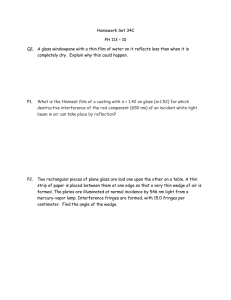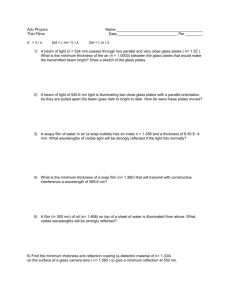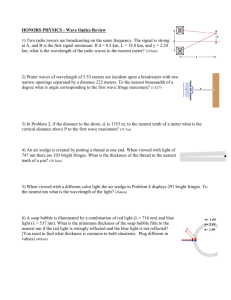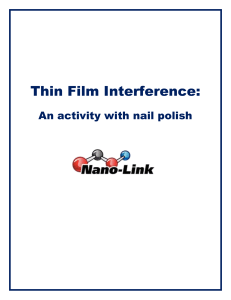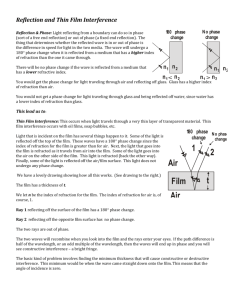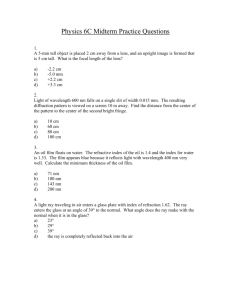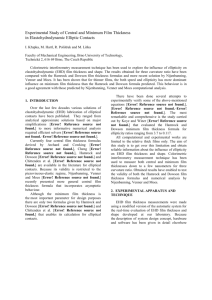Session 32: Thin films - Iowa State University
advertisement
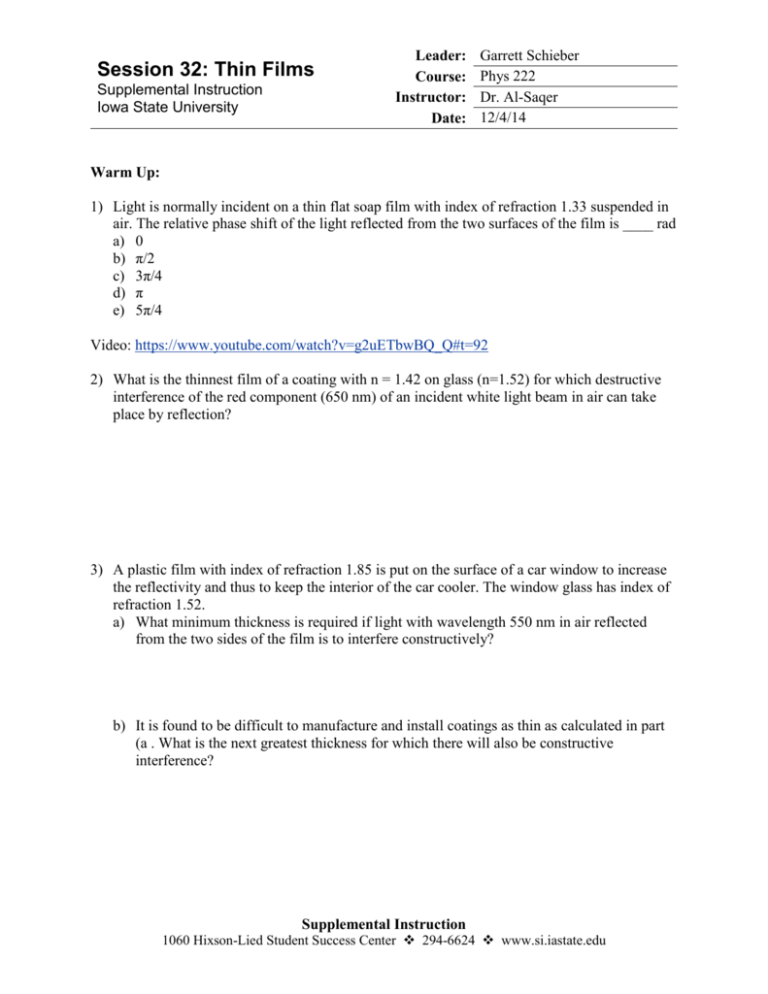
Session 32: Thin Films Supplemental Instruction Iowa State University Leader: Course: Instructor: Date: Garrett Schieber Phys 222 Dr. Al-Saqer 12/4/14 Warm Up: 1) Light is normally incident on a thin flat soap film with index of refraction 1.33 suspended in air. The relative phase shift of the light reflected from the two surfaces of the film is ____ rad a) 0 b) π/2 c) 3π/4 d) π e) 5π/4 Video: https://www.youtube.com/watch?v=g2uETbwBQ_Q#t=92 2) What is the thinnest film of a coating with n = 1.42 on glass (n=1.52) for which destructive interference of the red component (650 nm) of an incident white light beam in air can take place by reflection? 3) A plastic film with index of refraction 1.85 is put on the surface of a car window to increase the reflectivity and thus to keep the interior of the car cooler. The window glass has index of refraction 1.52. a) What minimum thickness is required if light with wavelength 550 nm in air reflected from the two sides of the film is to interfere constructively? b) It is found to be difficult to manufacture and install coatings as thin as calculated in part (a . What is the next greatest thickness for which there will also be constructive interference? Supplemental Instruction 1060 Hixson-Lied Student Success Center 294-6624 www.si.iastate.edu 4) A uniform film of TiO2, 1036 nm thick and having index of refraction 2.62, is spread uniformly over the surface of crown glass of refractive index 1.52. Light of wavelength 520 nm falls at normal incidence onto the film from air. You want to increase the thickness of this film so that the reflected light cancels. a) What is the minimum thickness of TiO2 that you must add so the reflected light cancels as desired? b) After you make the adjustment in part (a), what is the path difference between the light reflected off the top of the film and the light that cancels it after traveling through the film? Express your answer in nanometers c) Express your answer in wavelengths of the light in the TiO2 film.
